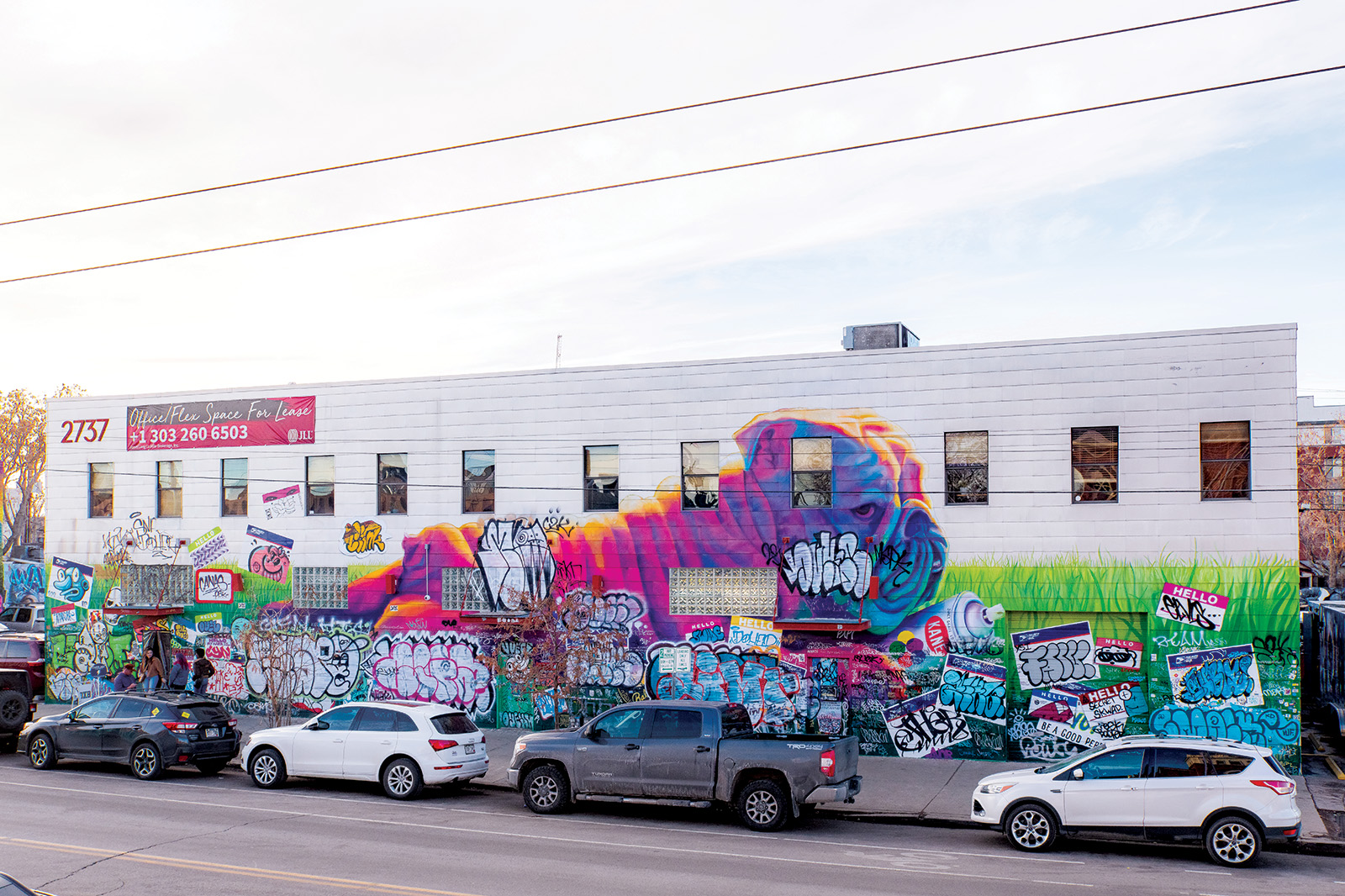The Local newsletter is your free, daily guide to life in Colorado. For locals, by locals.
Graffiti may look random, but there’s actually order in the chaos. Take this mural on Larimer Street, between 27th and 28th streets in RiNo. Originally painted by Patrick Kane McGregor during 2020’s CRUSH Walls festival, the piece included “hello” stickers and post office address slips for participants to sign. It has since become a two-story guestbook for everyone from famous artists to pen-packing bar-goers.

“It’s an unwritten thing,” says Jana Novak, co-owner of Denver Graffiti Tour. “If you come into town, you’re supposed to leave your tag here.” But far from being a simple cascade of colors, each spray has meaning—you just need a street art dictionary. Fortunately, we have one.
Legalese

Depending on whom you ask, there are two main types of street art: graffiti and muralism. “They used to be distinguished by their legality,” Novak says, with graffiti tending to be, well, illegal. But as graffiti has become more commercialized, it’s usually categorized by its text-based designs, while murals like McGregor’s typically feature people, animals, landscapes, and abstract creations.
Nom de Plume

Tags like these are one of the oldest and most common forms of graffiti. The simple, stylized signatures depicting the writers’ pseudonyms are quick to create, making it easier for taggers to evade detection and spread their brands.
Higher Calling

There’s a hierarchy in graffiti based on time and effort. Tags are the easiest to pull off (and thus held in lower regard). Then come throw-ups, which depict the writer’s name in two-toned bubble letters that are meant to be easily recognizable. At the top of the pyramid are pieces. Short for masterpieces, these labor-intensive works often use multiple colors, shading, and shadows to create a three-dimensional effect.
Make Art, Not War

Chris Haven is known for dropping his Pyramid People all over Denver, but when the artist Pin. Pusher started sprinkling his own similarly styled Voo Dudes around town, Haven didn’t get defensive. Instead, Haven invited his would-be rival into his collaborative graffiti crew, the Secret Skwad, a welcome outcome in a scene that can sometimes get violent.
In Memoriam

A halo above a tag indicates that person has died. This one memorializes prominent Denver graffiti artist Doher, who was killed in a hit-and-run in 2016.
A Spray in the Face

Layering your tag or throw-up on top of another’s is a sign of disrespect. “The thing about graffiti is that there are no rules and everything goes,” Novak says, “but there is some etiquette. There’s a battle going on here, between either different crews or people.”









